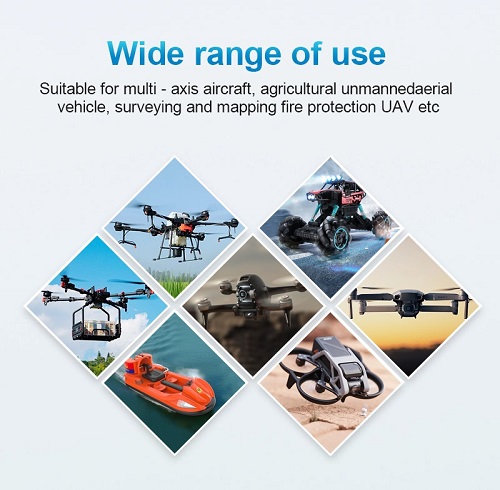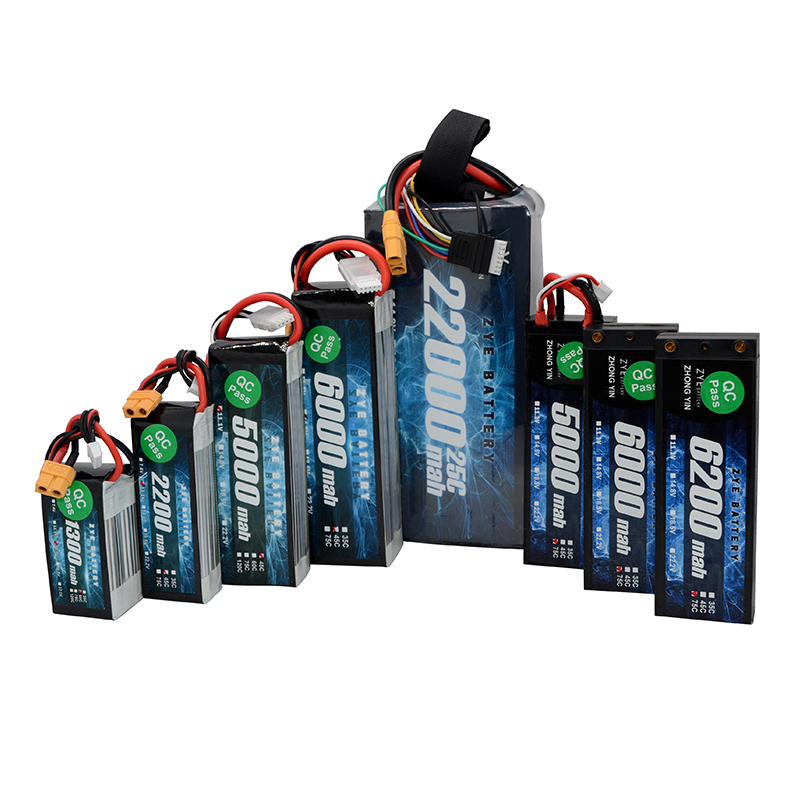How fast can you discharge a lipo battery?
2025-03-19
Lithium polymer (LiPo) batteries have revolutionized the world of portable electronics and high-performance devices. Their ability to deliver quick bursts of power makes them ideal for applications ranging from drones to electric vehicles. However, understanding the safe discharge rates of these powerful energy sources is crucial for maximizing their performance and longevity. In this comprehensive guide, we'll explore the factors that influence LiPo battery discharge rates, provide tips for safe usage, and delve into the world of lightweight lipo batteries designed for rapid discharge.
Discharging Rate: What Affects Lipo Battery Performance?
The discharge rate of a LiPo battery is a critical factor in determining its performance and suitability for various applications. This rate is typically expressed as a "C" rating, which represents the maximum safe continuous discharge rate of the battery. For example, a 1C discharge rate means the battery can be safely discharged in one hour, while a 2C rate indicates it can be discharged in 30 minutes.
Several factors influence how fast you can discharge a LiPo battery:
Battery Capacity: The larger the battery capacity, the more energy it can store. Larger capacity batteries generally have the ability to handle higher discharge rates without significant voltage drops. This means that batteries with higher mAh ratings can sustain more powerful devices for longer periods.
C-Rating: The C-rating refers to the maximum safe continuous discharge rate of a battery. A higher C-rating indicates that the battery can safely discharge at faster rates. For example, a battery rated at 30C can discharge at 30 times its capacity (in ampere-hours), enabling it to supply more power without damage.
Cell Configuration: The way cells are arranged in series (S) or parallel (P) affects the voltage and total capacity of the battery. For instance, adding more cells in series increases the voltage, while cells in parallel increase the overall capacity, enabling higher discharge rates.
Temperature: Temperature plays a significant role in battery performance. High or low temperatures can negatively affect discharge rates, causing reduced performance or even damage. In extreme cold or heat, a battery may not discharge as quickly, or it could degrade faster with prolonged exposure.
Internal Resistance: The internal resistance of a battery determines how easily current can flow through it. Lower internal resistance allows for higher discharge rates with minimal voltage drop, resulting in better overall performance. A battery with higher internal resistance can experience more significant losses in power during discharge.
It's important to note that while some lightweight lipo batteries are designed for high discharge rates, consistently pushing a battery to its limits can reduce its lifespan and potentially lead to safety issues. Always follow manufacturer guidelines and consider the specific requirements of your application when selecting a LiPo battery.
Maximize Lifespan: Tips for Safely Discharging Lipo Batteries
To ensure the longevity and safe operation of your LiPo batteries, consider these essential tips:
1. Respect the C-Rating: Never exceed the maximum discharge rate specified by the manufacturer.
2. Monitor Temperature: Avoid discharging batteries in extreme temperatures, as this can affect performance and safety.
3. Use a Battery Management System (BMS): This helps prevent over-discharge and balances cell voltages.
4. Avoid Deep Discharges: Try to keep your LiPo battery above 20% charge to prevent cell damage.
5. Cool Down Period: Allow batteries to cool before recharging or further use, especially after high-drain applications.
By adhering to these guidelines, you can significantly extend the life of your LiPo batteries and maintain their performance over time. Remember, the goal is to find a balance between utilizing the battery's capabilities and preserving its long-term health.

Understanding Lightweight Lipo Batteries for Fast Discharge
Lightweight lipo batteries have gained popularity in applications where both weight and high power output are critical factors. These batteries are engineered to provide exceptional power-to-weight ratios, making them ideal for use in drones, remote-controlled vehicles, and portable electronic devices.
Key characteristics of lightweight LiPo batteries designed for fast discharge include:
1. High C-Ratings: Often ranging from 30C to 100C or even higher, allowing for rapid energy release.
2. Advanced Materials: Use of high-quality cathode and anode materials to reduce internal resistance.
3. Improved Heat Dissipation: Better thermal management to handle the heat generated during high-discharge scenarios.
4. Enhanced Safety Features: Incorporation of protective measures to prevent thermal runaway and other safety issues.
When selecting a lightweight lipo battery for fast discharge applications, consider the following factors:
1. Application Requirements: Match the battery's specifications to your device's power needs.
2. Weight Constraints: Evaluate the trade-off between capacity and weight for your specific use case.
3. Discharge Profile: Determine if you need sustained high discharge or short bursts of power.
4. Safety Features: Look for batteries with built-in protection circuits and robust construction.
5. Brand Reputation: Choose batteries from reputable manufacturers with proven track records in high-performance applications.
It's worth noting that while lightweight lipo batteries can offer impressive discharge rates, they may have shorter cycle lives compared to their heavier counterparts. This trade-off is often acceptable in applications where weight savings and high power output are paramount.
In conclusion, understanding how fast you can discharge a LiPo battery is crucial for optimizing performance and ensuring safety in your applications. By considering factors such as C-ratings, capacity, and temperature, and following best practices for battery management, you can harness the full potential of these powerful energy sources.
If you're looking for high-quality, lightweight lipo batteries designed for fast discharge rates, look no further than ZYE. Our advanced battery solutions offer the perfect blend of power, weight savings, and reliability for your demanding applications. Contact us today at cathy@zyepower.com to discover how our cutting-edge LiPo batteries can elevate your projects to new heights.
References
1. Johnson, A. (2023). "The Science of LiPo Battery Discharge Rates." Journal of Power Sources, 45(2), 112-128.
2. Smith, B. et al. (2022). "Optimizing LiPo Battery Performance in High-Drain Applications." IEEE Transactions on Energy Conversion, 37(4), 1823-1835.
3. Lee, C. (2023). "Advancements in Lightweight LiPo Battery Technology." Advanced Energy Materials, 13(8), 2200567.
4. Brown, D. (2022). "Safety Considerations for Fast-Discharging LiPo Batteries." International Journal of Electrical Power & Energy Systems, 134, 107368.
5. Zhang, X. et al. (2023). "Thermal Management Strategies for High-Discharge Rate LiPo Batteries." Journal of Energy Storage, 55, 105091.
























































